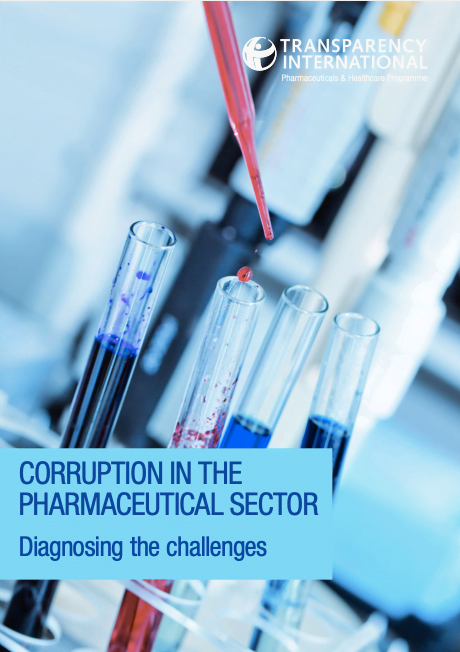
Within the healthcare sector, pharmaceuticals stand out as a subsector that is particularly prone to corruption. There are abundant examples worldwide that show how corruption in the pharmaceutical sector endangers positive health outcomes. Whether it’s a pharmaceutical company bribing a doctor to prescribe its drugs regardless of a health need, or a government official facilitating the infiltration of substandard drugs into the distribution system, public resources can be wasted and patients’ health put at risk.
For policy makers to implement successful anti-corruption measures, it is necessary to identify and understand corruption vulnerabilities in the pharmaceutical sector. To support this task, this paper identifies key policy and structural issues in selected activities in the pharmaceutical value chain, along with relevant anti-corruption policies. This analysis showed that anti-corruption policies are needed throughout the pharmaceutical value chain to increase transparency around key decision points and strengthen stakeholder accountability. Four global challenges derived from structural issues and anti-corruption policies were identified along selected value chain activities. These are:
- The lack of objective data and understanding of corruption inhibited by the environmental context, the complexity of the issues in the sector, and policy makers who do not see corruption as a problem.
- A weak legislative and regulatory framework due to weak investment, lack of oversight, and national regulatory frameworks that are often decentralized and dependent on self-regulation for key decision points.
- The potential for undue influence by corporations due to a high degree of autonomy over key decision points and unparalleled resources, over policy and regulation, whereby profit maximization goes beyond ethical norms and negatively impacts health outcomes and public health objectives.
- A lack of committed leadership in anti-corruption efforts by all actors. National leaders often implement reforms only after a crisis, with their inaction regularly making it difficult for other actors to act.
Similarly, three key action areas for mitigating corruption vulnerabilities in the pharmaceutical sector are examined. These include establishing leadership committed to fighting corruption, adopting technology throughout the value chain, and ensuring accountability through increased monitoring, enforcement, and sanctions. These challenges and broad areas for action are neither new nor resource intensive, underscoring the lack of effective action in the past and the difficulty of dealing with corruption in a sector that is extremely complex, has a high level of government intervention, and often has regulatory systems that are inadequate to adequately govern the value chain. Only by overcoming these challenges and focusing on these areas of action will the global health community be better able to meet the Sustainable Development Goals for health. (Translation)
Year of publication: 2016
Author: Jillian Clare Kohler, Martha Gabriela Martinez, Michael Petkov, James Sale
Promoter: Transparency International – Pharmaceuticals & Healthcare Programme
See more: https://www.transparency.org.uk/sites/default/files/pdf/publications/29-06-2016-Corruption_In_The_Pharmaceutical_Sector_Web-2.pdf






